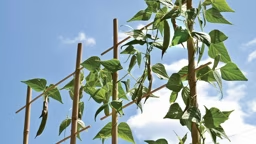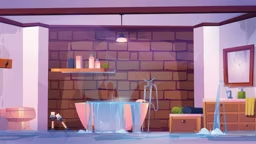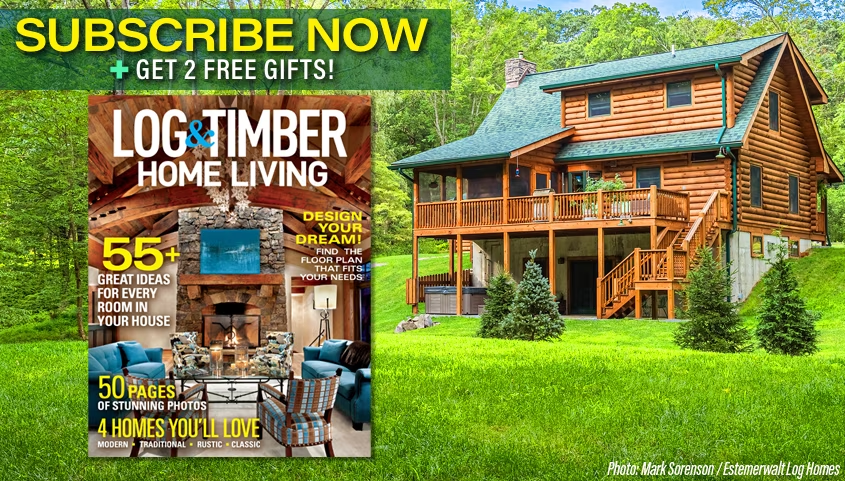Story by Sara Brown | Photos by Marvin Windows and Doors
In the world of timber homes, there’s nothing quite as appealing as the warmth of wood. But in the interior spaces of a home, that wealth of wood, though striking, can leave a space feeling dark and even claustrophobic without smart window placement and the addition of natural light. Because even light-colored wood is less reflective than painted finishes, bringing in light is far more important in a custom wood home than in a conventional house. Fortunately, to create a bright, inviting timber home, the solution is clear — quite literally. But while the process of picking the right windows may seem simple, there are countless style, size and material options to consider before making a decision.
Window Style
Today’s windows are responsible for providing light, insulation and proper ventilation — all while serving as a central design feature in your home. Making a meaningful style statement with your windows depends on selecting the right one for each space. Knowing your options and the window’s purpose will help you weigh the benefits and drawbacks of each style and zero in on the best choice. Here are your options, based on how the windows open and close:
- Single and double-hung windows feature one or two sashes, respectively, that move up or down. They are more affordable than their casement counterparts, but they also allow more air leakage. They should be placed in an easily accessible area for maintenance and operation. (Hint: Don’t place a double-hung window above a kitchen sink, because it would be difficult to reach from across the countertop).
- Casement windows include a hand crank that opens the glass from a side hinge. The window opening can be angled for optimal ventilation and easy care as well. A closed casement window is more airtight than the single- or double-hung variety. Avoid placing casement or awning windows above a porch or deck where they can obstruct a walkway when opened.
- Awning windows are hinged at the top, and open outward and up. They provide excellent ventilation, with partial or full opening capabilities, to customize airflow. Because of their construction, they keep out moisture and, like casement windows, have an airtight seal, but size options are limited.
- Gliding windows slide from side to side. They are easy to clean and provide good ventilation, but they are less resistant to the elements than hinged windows.
- Picture windows are fixed in place and cannot be opened for ventilation. They come in a countless array of shapes and sizes that can be combined to fit any space.
- Clerestory windows are a row of windows placed near the ceiling. This style is ideal for a room where both extra light and privacy are needed. Rectangular transom windows serve the same purpose as clerestory windows but are typically placed above a door.
- Bay and bow windows are a combination of three or more windows that extend beyond the main wall. Because of their placement, they are most often used for framing picture-perfect views in a great room. Their size can equate to large amounts of heat loss, however, so they should be used judiciously.

Choosing Window Materials
In addition to ushering in the outdoors and creating more scenic spaces, new window innovations mean they can now make your home more comfortable and easier than ever to maintain, depending on the materials you choose.- Vinyl is a strong plastic material that is used for its durability, energy efficiency and ability to stand up to the elements. This material will not fade in color, flake, peel or rot.
- Wood comes in a variety of species, such as fir, pine, mahogany or alder. Each species has a range of characteristics, like grain, color and sap content, which contributes to its unique appearance.
- Clad-wood is a strong layer of metal on wood, providing extra protection and low-maintenance benefits with no exterior painting required.
- Aluminum is a lightweight and strong material that is a cost-effective alternative to wood. This material is corrosion-resistant and performs well in most climates. “Customers should be very discerning about the material they choose for their windows,” explains Christine Marvin, Director of Marketing at Marvin Windows and Doors. “They should look for a high-performace finish that will withstand chalking and fading, and have minimal expansion and contraction over time.”
Another thing to consider when choosing window materials is maintenance and durability. “A smart option for a homeowner who is looking for a strong, durable and beautiful window that is also low-maintenance and requires little to no upkeep would be to choose a window with a clad exterior and a wood interior,” Marvin says. “Clad windows allow you to have the beautiful wood on the interior, but have an aluminum clad finish on the exterior, which means you won’t have to maintain the paint or stain on the exterior of the product.”
See also: Can a Timber Home Have Too Many Windows?
Energy Efficient Windows
A slew of energy-efficient options for your home’s windows means you can feel good about protecting the environment — and your pocketbook. To achieve a good Energy Star rating, windows often have one, or a combination, of these features: low-E (low-emissivity) glass, gas-filled chambers, double and triple glazing, and special coatings. When window shopping, understanding the terms used to rate the energy efficiency — R-factor, U-factor, Solar Heat Gain Coefficient (SHGC) — can be overwhelming.Here is a basic breakdown of the terms:
- R-factor measures the resistance of the window to transmitting heat. A high R-value means that less heat flows through the glass.
- U-factor, also known as thermal transmission, measures how well a window prevents heat from escaping. The lower the number, the less heat will be lost from the interiors and the better the insulation the window provides.
- SHGC signifies how much solar heat the window will block — the lower the number, the better the shading power. The SHGC is particularly important in a room with expansive windows, such as a great room. Those wanting to hold in heat in the winter should opt for a higher SHGC rating, while those wanting to lessen cooling needs in the summer should choose a lower rating.
- The Energy Star label assesses each of these factors within a particular window and includes recommendations based on your climate and location. Coupling good ratings with additional features, like a gas-filled window that insulates against heat loss by filling the space between two panes with either argon or krypton, will save energy and money.
- Finally, pay close attention to how your windows are installed. Even the best-rated glass will not boost the comfort level of a home if the windows are not sealed properly.
Then sit back, and enjoy the view.












